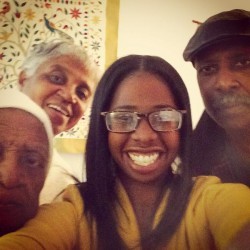"I get by with a little help from my friends."
When John Lennon and Paul McCartney wrote that line on Sgt. Pepper's Lonely Hearts Club Band, one of the Beatles' most iconic albums, they were speaking for a generation concerned with love and friendship and maybe a few slightly less sanctioned social activities. More than forty years later, that same generation is contemplating its own aging and is increasingly concerned with finding ways to age well. One of the best ways to do that turns out to be remembering those words: a little help from my friends.
The Beatles were on to something big: the fact that social isolation is a social determinant of health, so potent yet so under-appreciated that we are still discovering just how important it is to this day.
Lonely hearts at risk
What we now know is that lonely hearts are hearts at risk, because social isolation is a killer. Specifically, social isolation is associated with, and a powerful predictor of cardiovascular disease, cognitive decline, institutionalization, stroke, re-hospitalization, depression, and increased risk of suicide, just to name a few. It is linked to everything from a higher risk of contracting the common cold to faster tumor growth in cancer patients. All in all, socially isolated people are twice as likely to die prematurely (even controlling for other relevant factors) than are people with many strong social relationships.
This generally holds true for people of all ages. Older people, however, may need and respond to somewhat different forms of support and intervention to address the problem of isolation.
Risk factors for social isolation
"Ah, look at all the lonely people." - The Beatles, Eleanor Rigby
There is a regrettably long list of circumstances that can put someone at risk of social isolation and its repercussions. Physical and geographical isolation are among the top risk factors. Others include being a caregiver, not being able to drive, lacking other good transportation options, identifying as LGBT, having a language barrier, having a disability, and the death of a spouse or partner.
The National Council on Aging estimates that one in six seniors face such risks, and that older women are at higher risk, representing over 60 percent of isolated older adults.
Even just living alone, getting sick or injured, or losing a job can trigger social isolation, according to research from the AARP Foundation, which has funded organizations working to address the problem.
How we can prevent and reduce social isolation
We can, and must, work on this problem on several fronts -- as individuals, as organizations, and as communities.
Across the country, senior centers do this good work daily, providing group lunches and other social opportunities for older people, and sometimes getting quite creative with their outreach to people at risk of isolation. According to a National Institute of Senior Centers survey, innovative programs include "Home Tea," delivering tea and inspirational cards to homebound seniors once a month. Another is "Simply Soup," a community gathering in which seniors come together for a meal and entertainment, with vans picking up those who lack transportation.
Age-friendly communities target social isolation
At the community level, reducing social isolation through programs, urban planning, communication, and person-to-person outreach is a key focus of the age-friendly movement. The guiding principle is to look at all planning, spending, construction, and policy decisions and be sure that they lead to outcomes that are age-friendly -- meaning, good for people of all ages, including older people.
In fact, the World Health Organization, a leader in the age-friendly communities movement, lists social inclusion as one of the key considerations for communities seeking to join its Global Network of Age-friendly Cities and Communities.
Some of the ways communities can work to become age-friendly and keep older adults connected and engaged include:
- Promoting volunteer and work opportunities for older adults. Having a role and more interaction in the community can be a lifeline.
Sometimes fun can be part of the answer. Our lives can become very stratified by age, and the pleasure of spending time with people of different ages can get lost. The organization I lead, Grantmakers In Aging, through its age-friendly initiative Community AGEnda, funded by the Pfizer Foundation, has launched a person-to-person social media campaign called #GenTogether, which encourages intergenerational connections by inviting people to take a photo with at least one friend, acquaintance, or family member of another generation. (You can also use an existing shot on your phone or computer.) The next step is posting it on Twitter or Instagram or on the Grantmakers In Aging Facebook page, using hashtag #GenTogether. Photos can also be emailed to selfie@GIAging.org. Every picture tells a story, so please tell us yours, in a line or two. We'll award cash prizes for the best photos and post them all on the #GenTogether section of our Facebook page.
- Improving access to services, such as home-delivered meals. These programs, such as Meals on Wheels, provide not only important nutrition (a Census analysis by NCOA shows that isolated seniors are more than three times more likely to suffer from hunger than seniors who are not isolated) but important companionship as well.
"Here in Arizona, some of our home-delivered meal programs in remote rural areas are very difficult to administer because it can take hours to get to some homes," says Mayor Michael LeVault of Youngtown, Arizona, chair of the Maricopa Association of Governments Regional Council. (MAG is a Community AGEnda site.) "Now some agencies are working with a program that uses Federal Express to deliver the meals. The drivers receive special training in how to interact with the person at home and help them bring the package inside the house, and the agency follows up with reassurance phone calls so there is always a human touch, which is so important."
If it is alarming to realize that social isolation can make us sick and shorten our lives, there is also good news on the other side of the coin. If we increase social connections for ourselves and others, we create tangible health benefits that are available in few other ways. For example, a 2011 study from Rush University Medical Center found that a strong social life can actually ward off cognitive decline, by as much as 70 percent.
Paul McCartney was right. A little help from your friends really CAN help.

